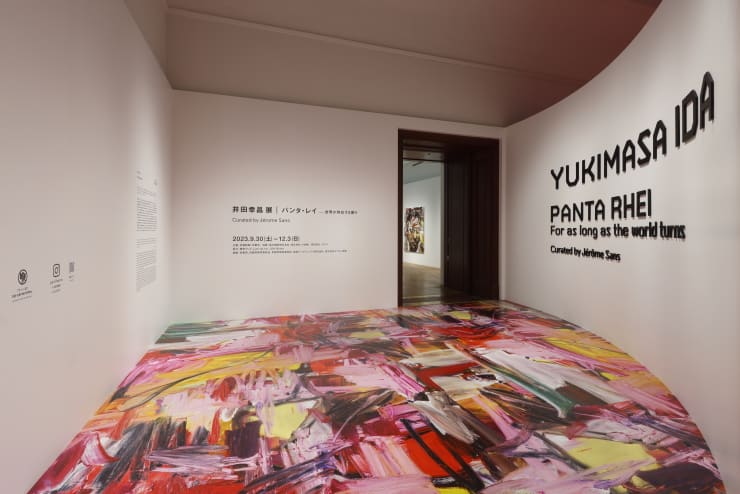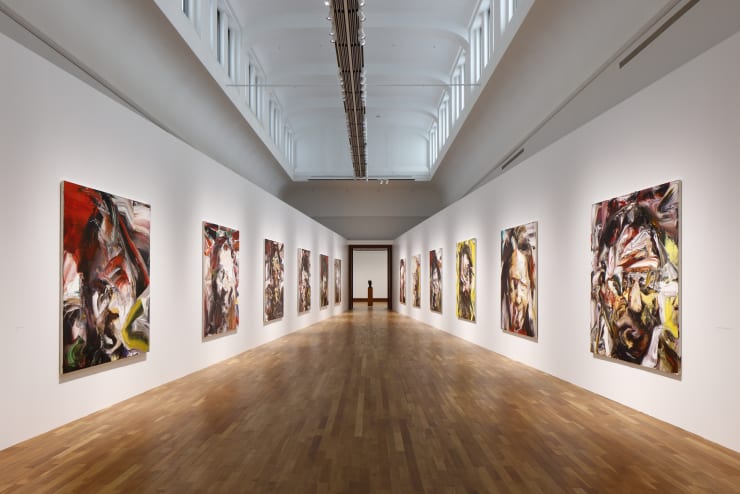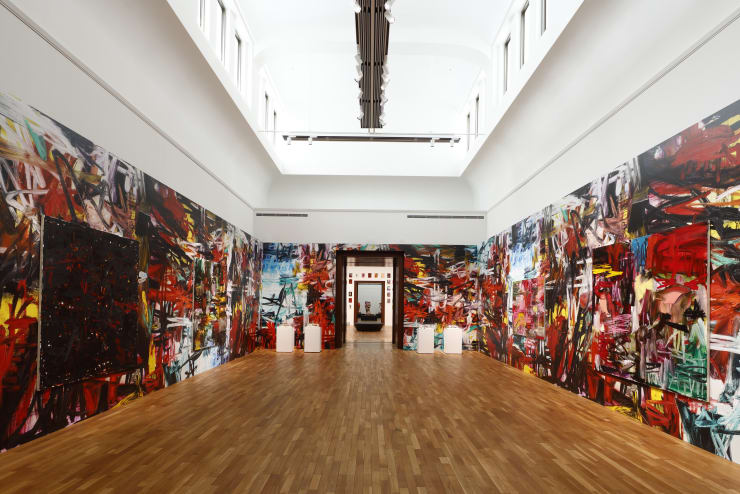The first major museum exhibition from Yukimasa Ida, titled Panta-Rhei - For as long as the world turns and curated by Jérôme Sans, opens at Kyoto City KYOCERA Museum of Art, 30 September – 3 December 2023. Known for his works which explore the concept of "Ichi-go Ichi-e” (translated as a "once in a lifetime encounter”), the exhibition considers concepts of the "now” from past to present, encompassing Ida’s extensive practice across painting and sculpture. Uniting works completed across 2015-2023, including both large-scale and small-scale formats, the show celebrates the breadth of the artist’s oeuvre and asserts his position as a leading figure within a new generation of Japanese painters. Panta Rhei is Yukimasa Ida’s first solo institutional exhibition and runs alongside a smaller offshoot of the show at Yonago City Museum of Art.
Conceived like a journey through his vocabulary, like a total immersion into his world, this survey show celebrates the diversity of a compulsive, bounteous body of work. The exhibition exemplifies the contradictory forces behind Ida’s works: a need to explore the nature of "ever-changing things” alongside the abiding belief that “things never change.” Presented against the context of today’s fluid, fast-paced world, Ida explores the permeability of borders between form and medium, bridging abstract and figurative elements with ease and switching innately from his paintbrush to modeling clay, portraits to landscapes whilst circulating freely through references and time. Curator Jérôme Sans comments: “Ida is one of the most exciting voices of a new generation of Japanese artists. Making his way between the past, the present, and the future, with the dexterity of a young mind, Ida’s exhibition thwarts any notion of style that would block him within a single image, bringing to light his position as an artist of absolute freedom.”
A central component of the exhibition is dedicated to Ida’s emblematic, enigmatic crushed portraits. Across thick, spontaneous brushstrokes which conceal outlines and details, in large-scale works such as Koji (2021) and Jorgen (2022), he removes eyes, mouths, and sometimes full facial features. The portraits speak as much to the disappearance of physicality in an increasingly digital world as they do to the erasure of the individual in the mass of contemporary societies.
A central component of the exhibition is dedicated to Ida’s emblematic, enigmatic crushed portraits. Across thick, spontaneous brushstrokes which conceal outlines and details, in large-scale works such as Koji (2021) and Jorgen (2022), he removes eyes, mouths, and sometimes full facial features. The portraits speak as much to the disappearance of physicality in an increasingly digital world as they do to the erasure of the individual in the mass of contemporary societies.
Retaining a painterly quality, Ida’s sculptures are intimately linked to his pictorial work. In pieces such as Study for the Pope (2019), Ida presents a face in bronze that is crushed and distorted, recalling Francis Bacon’s own recreations of Velazquez’s Portrait of Pope Innocent X (1650). His sculptures belie a compulsion to unlearn everything, to throw it all away and begin again. His wooden works, carved with a chainsaw before being painted, offer rough, primal, almost totem-like portraits finished with crudely applied brushstrokes. Inflicting force upon matter in an almost ritualistic fashion, Ida sculpts and paints relentlessly, an act that resembles a battle with nature, as well as with history and the present.
This alternation between past and present provides the backdrop for one of the artist’s most monumental works, the illuminated painting The Last Supper (2022), shown here for the first time. Offering a twist on one of the most celebrated subjects of the artistic canon, Ida responds to the continuing rise of Artificial Intelligence by ejecting humanity from the scene and replacing Jesus and his twelve disciples with ‘female’ robots. This repositioning of established artistic motifs is apparent across several works on show, from Monet’s Garden (2022) to Cinderella (2017) and Queen of the Mirror (Snow White) (2019); at once reverential and irreverent, Ida’s brisk cultural overview suggests a fast-track over the history of art and literature, passing through the creative canon with a rapidity of a cell-phone scroll.
In "End of Today,” an ongoing series, the artist’s obsessive and persistent desire to capture the transience of existence is palpable across small-scale, intimate paintings, each created within one day. Presenting a sort of personal visual diary made up of 300 artworks, including portraits, landscapes, and abstractions, the works both respond to and resist a fear of forgetting. Again, the artist’s process mimics the fleeting, 24-hour format of social media feeds whilst also drawing on the Surrealist practice of automatism. The result asserts Ida as a deft chronicler of his time, with each painting serving as a page within an ongoing visual diary he keeps as a way of promised, perpetual renewal.
In "End of Today,” an ongoing series, the artist’s obsessive and persistent desire to capture the transience of existence is palpable across small-scale, intimate paintings, each created within one day. Presenting a sort of personal visual diary made up of 300 artworks, including portraits, landscapes, and abstractions, the works both respond to and resist a fear of forgetting. Again, the artist’s process mimics the fleeting, 24-hour format of social media feeds whilst also drawing on the Surrealist practice of automatism. The result asserts Ida as a deft chronicler of his time, with each painting serving as a page within an ongoing visual diary he keeps as a way of promised, perpetual renewal.
July 7, 2023






